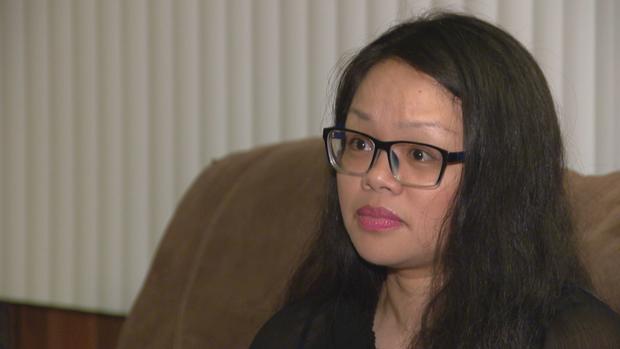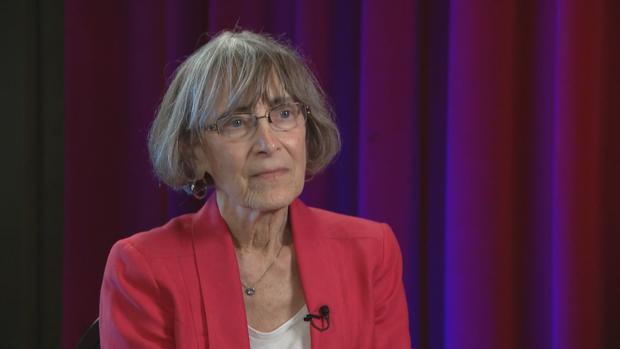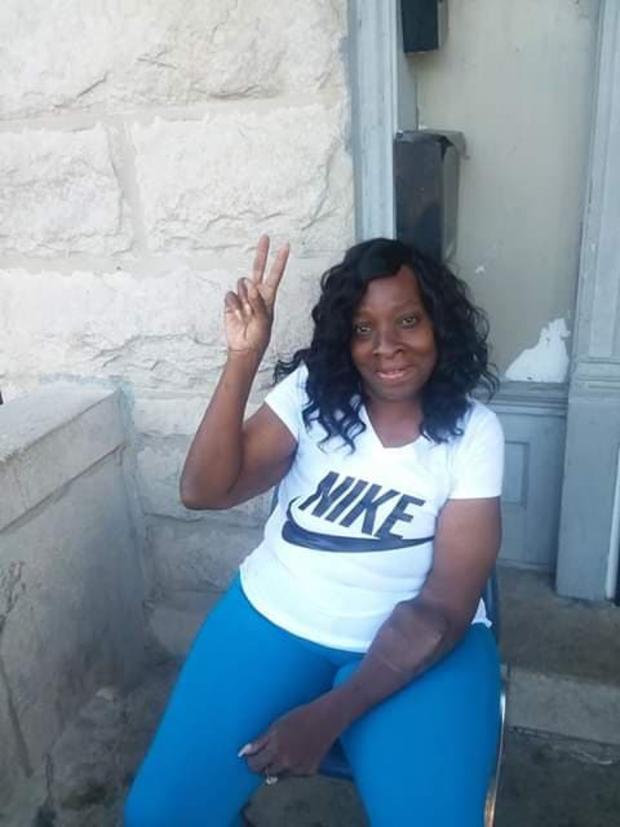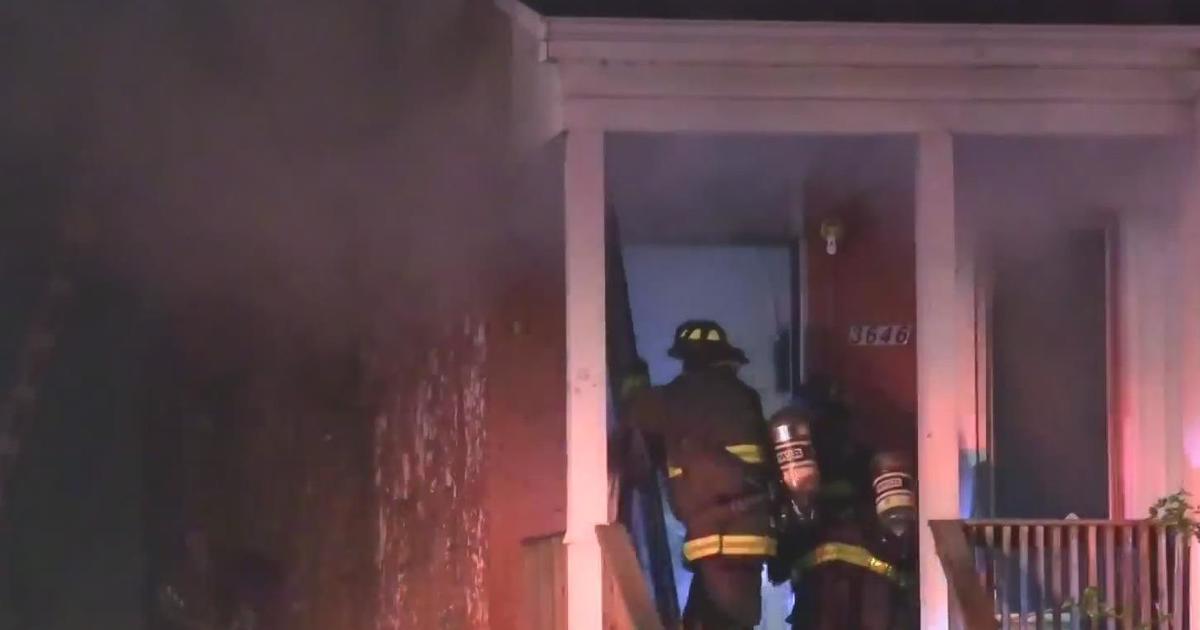'Where Are You? She's Bleeding Out:' Woman Dies While Waiting For Chicago Ambulance; Thousands Of Other Callers Left Waiting For Long Periods Of Time
By Pam Zekman, Samah Assad, Dan Blom
CHICAGO (CBS) -- It hadn't even been a full 24 hours since Sandra Williams lost the most important person to her.
The blood stains were still fresh on the front steps of her home. The shock was fresh, too, as Sandra struggled to sift through her grief and find the right words to describe how she felt.
"I wouldn't wish this pain on anybody," Sandra said. "I wouldn't wish what I saw and witnessed last night on my worst enemy."
That night, on a chilly day in October, Tina Williams had just returned from the hospital, having her IV access fixed for dialysis treatments, and was walking up the steps to her porch. Sandra often took care of her mom, and helped her eat and take her medication.
"A very nice person, very helpful to people," Sandra said of her mom. "Always was happy, smiling, lively, you know."
As Tina's other daughter, Tiffany, was helping her up the steps, her IV access began to bleed.
"It was coming out like water," Tiffany said.
Tina's granddaughter, Arieal, and a male caller made a total of five calls to 911 for an ambulance.
Initially, Fire Department spokesperson Larry Langford said the 911 calls from the house that night did not reflect the seriousness of the situation. But CBS 2 Investigators obtained the five recordings which show that's not the case. In fact, it's the opposite – the audio paints the picture of a chaotic and chilling scene.
Warning: This audio of these 911 calls is disturbing. With the family's permission, CBS 2 chose to publish it to show what happened the night Tina Williams died. Excerpts of the calls were edited for clarity and condensed into one clip.
"Can I have an ambulance at (address) W. Wilcox?" Arieal said in the first call, sounding worried. It was 8:33 p.m. "My grandma just came home from the hospital and now she's bleeding out fast," she added, frantically.
"She's losing a lot of blood," a man can be heard saying in a second call at 8:34 p.m. Moments after, he said, "Looks like she's gushing out blood here from her arm."
"Tell them to get a dry clean cloth, a towel or something, hold pressure to where she's bleeding from okay?" the operator replied. "Tell them you've already called for an ambulance. We're on the way." Screams from the family can be heard in the background.
"She's lost a lot of blood. I need an ambulance immediately," the male caller said in the third call to 911 at 8:37 p.m.
"Somebody already called. They don't just pop out of thin air unfortunately," the operator replied. "Somebody just called, so an ambulance is on the way to you now."
Arieal called 911 again at 8:39 p.m. – this time, in tears.
"My grandma's bleeding out on the porch," she cried. "She's not responding. There's blood everywhere."
In the last call, at 8:41 p.m., Arieal shrieked. "Where are you? She's bleeding out. And we need an ambulance. What's taking you all so long?"
With each agonizing minute that passed, the family feared what would happen.
Eight minutes later, an ambulance finally arrived and paramedics used a tourniquet to stop the bleeding, according to event query reports obtained from Office of Emergency Management Communications (OEMC).
But the Fire Department confirmed Truck 26 – with a paramedic and a tourniquet – was sitting at its headquarters just a half mile away. Once it was sent, it took just three minutes and 31 seconds to respond. The city failed to follow its own protocol of sending fire engines and trucks with a paramedic on board when an ambulance is not readily available.
By the time the ambulance got there and began working on Tina, however, the family said it was too late.
"She died in my arms," Tiffany said.
Her mother had recently turned 56.
"Way too young to die," Arieal said.
The family is one of hundreds of thousands of people who called 911 in Chicago in the last two years. A six-months-long CBS 2 investigation found they're not the only ones who were left waiting.
In a letter of commitment in March, the Fire Department agreed to maintain an "optimum" six-minute paramedic response time with the Illinois Department of Public Health. But in many cases, CBS 2 found, they are failing to meet it.
'I need somebody'
CBS 2 Investigators analyzed a database of 715,140 medical emergency calls made to 911 in Chicago, where an ambulance or fire truck responded. Our team obtained the data through a Freedom of Information Act (FOIA) request with the OEMC.
It included the date and time the calls were received by the dispatch center, the time an ambulance or fire truck was dispatched, as well as the time paramedics arrived on scene -- from Jan. 1, 2018, through Nov. 4, 2019.
CBS 2 analyzed and mapped each call by the neighborhood where it was made. Zoom in and click on a circle for more information about response times in that neighborhood. Click the arrows on the left to learn more.
Our analysis found 19 percent – or more than 137,000 calls for help – took longer than seven minutes for an ambulance or fire truck to arrive. That's despite the Fire Department's commitment to a six-minute response time.
"I've never been speechless in my life," said Chicago Fire Department Paramedic Field Chief Pat Fitzmaurice. "That many calls…this is blatantly wrong."
Fitzmaurice has criticized the Fire Department for more than 30 years for what he believes are excessive ambulance delays.
"Seconds make a difference. Eight minutes, you're going to probably die," he said, referring to Tina Williams' case. "I can't imagine standing on a porch and watching my mother bleed to death and not be able to do anything. That's sickening."
Another call that can be found in the data we reviewed was made by Bernadette Caburney.
Her 67-year-old mother, Estrella, fell in the kitchen in July. Bernadette suspected a stroke.
"Her lips have lost color," Bernadette remembered. "She's sweating profusely. She's slumped over."
So she called 911 three times. An operator can be heard over the recording searching for an ambulance or fire truck.
"Can you please shoot up to (address) Bell Plaine for an unconscious person?" the operator said. "46, 73, are either of you available? 46 73…is somebody available?"
While a fire truck with a paramedic arrived in 10 minutes and six seconds to administer oxygen, only an ambulance can transport someone to the hospital. But it took the ambulance 30 minutes and 19 seconds to get to the scene, OEMC documents said.
"It's insanity," Fitzmaurice said. "That's a lifetime."
As part of CBS 2's review of 911 calls, we analyzed data for some of the most serious calls, like strokes – similar to Estrella's.
The data shows:
- Nearly 11,000 people called 911 about a stroke.
- 11 percent of the time, it took seven minutes or more for an ambulance or fire truck to arrive. That's more than 1,200 people waiting for help.
We also looked at 911 calls for gunshot victims:
- There were more than 4,200 calls.
- 249 callers waited seven minutes or longer for an ambulance or fire truck to arrive.
Bernadette was thankful her mother was OK, but said she was shocked when paramedics apologized not only for the delay, but acknowledged a broader issue caused by a shortage of ambulances.
"[They] said it was a very big issue that they need more ambulances," she said, "because they're traveling further distances to answer 911 calls."
Lack of resources
The Fire Department denied multiple requests for interviews for this investigation.
CBS 2 Investigator Pam Zekman first began highlighting concerning cases of long response times in 2014, including a heart attack victim who waited 24 minutes for an ambulance to arrive.
As a result, the Fire Department added five ambulances, bringing the fleet to 80 total. At that time, CBS 2 analyzed data from OEMC found that even after the new ambulances were put on the street, average response times only improved by four seconds.
"It was putting a Band-Aid on a wound that needed a tourniquet," Fitzmaurice said in March.
A study in 2018 by the International Association of Fire Fighters, requested by Chicago Firefighters Union Local 2, said 20 more ambulances are needed. Chicago ranks last of the five largest cities for the number of ambulances per 100,000 people, according to the study.
With vehicle and staffing included, it would cost approximately $1 million per rig, the Fire Department said.
In May, Mayor Lori Lightfoot vaguely said she and Fire Commissioner Richard Ford would address the issue, but not how.
"I've seen the reporting that has been done and Chief Ford and I will address those issues," Lightfoot said.
Flawed data
The Fire Department, along with OEMC, have said the data they use to track ambulance and fire truck responses does not offer a complete picture. OEMC cited multiple factors, including the potential for human error. This includes when paramedics respond to potentially life-threatening incidents, their ability to notify dispatch of their arrival can be hindered due to the severity of the situation.
The Fire Department's computer assisted dispatch (CAD) system is supposed to record the time in which a call is received by 911. In addition, paramedics must use the system to record when they arrive on the scene of a call or at the hospital with a patient by pressing a button.
For months, the Fire Department said it plans to produce a comprehensive report on ambulance response times. CBS 2 Investigator Pam Zekman has repeatedly asked the Fire Department on the status of this report.
"The data isn't clear just yet, Ms. Zekman. As soon as we can make sure the data is clear, I will get those numbers to you," Ford said in July.
More than five months later, the Fire Department has not provided it.
The department's failure to produce or release its own analysis on response times raises a bigger concern. The data is critical to understanding how well they're responding to emergency medical calls. It could also help identify where improvements need to be made, said Carol Davids, a professor of information technology and management with the Illinois Institute of Technology.
"Part of the problem is, they don't know how bad the problem is," Davids said.
"In general, the solution to any problem, including technology problems," she added, "(is) you're going to have to know where you are (to) get a grip on the current situation in order to understand what needs to be fixed."
But the Fire Department's 25-year-old CAD system is outdated. If a paramedic does not press the button, or there is a loss of connection, for instance, the time will not be recorded or tracked.
"The system they're using is fairly old, and we have new capabilities to communicate data which can be exploited, which probably are not," Davids said.
In the data CBS 2 did obtain from OEMC, we found 5.4% of calls, or more than 39,000, did not have a recorded time in which an ambulance or firetruck arrived, making it impossible to determine how long it took for these callers to receive a response.
"It's important because we'll be able to save lives – we need to be able to save lives," Davids said. "And the technology exists and enables us to do that."
The issue appears to have prompted the OEMC to produce a different report – one that tracks the 10 longest ambulance response times each day. Through a FOIA request, CBS 2 obtained the report and found the following:
- There were 445 ambulance runs in a six-week period in 2019.
- The CAD system either failed or wasn't used properly by paramedics to document arrival on scene. In the data, it's listed as the "button" wasn't pressed in time.
- This happened 121 times, or 27% of the time.
"The question is the will," Davids said. "And the finances have to follow the will, I think."
Looking ahead
The fire department is currently taking bids on a new and upgraded CAD system that would better track ambulance response times. The department has not committed to purchasing additional ambulances at this time.
Fire department spokesman Larry Langford said in a statement that "ensuring Chicago's residents have access to the highest quality emergency medical services they need and deserve remains the top priority and greatest responsibility of the Chicago Fire Department."
It also said to "better improve rapid ambulance response times," the department is working with the University of Chicago's Urban Labs to complete an analysis of its ambulance fleet. The study will focus on the impact of the five new ambulances added to the department in 2018 and will also include reviewing data to hone in on any errors.
OEMC said it is now investigating how 911 calls were handled in the two incidents CBS 2 uncovered in this report. "If the investigation reveals any violation of our dispatch protocol policies," the statement said, "we will ensure the necessary discipline steps are taken and any individuals involved are held accountable."
In the case of Estrella Caburney, OEMC said the initial ambulance that was dispatched to the scene had a flat tire en route and another ambulance had to be found.
In the case of Tina Williams, OEMC said it is reviewing policies and procedures "to determine if errors were made or policies need to be changed."
As the Williams family copes with the loss of their mother and grandmother, they continue to wonder, "what if."
"…if they got there faster, she would've been OK," said her daughter, Sandra. "She'd still be here."
"I blame the city," said Tina's granddaughter, Arieal. "Because if we would have had the proper help, she would have made it."










